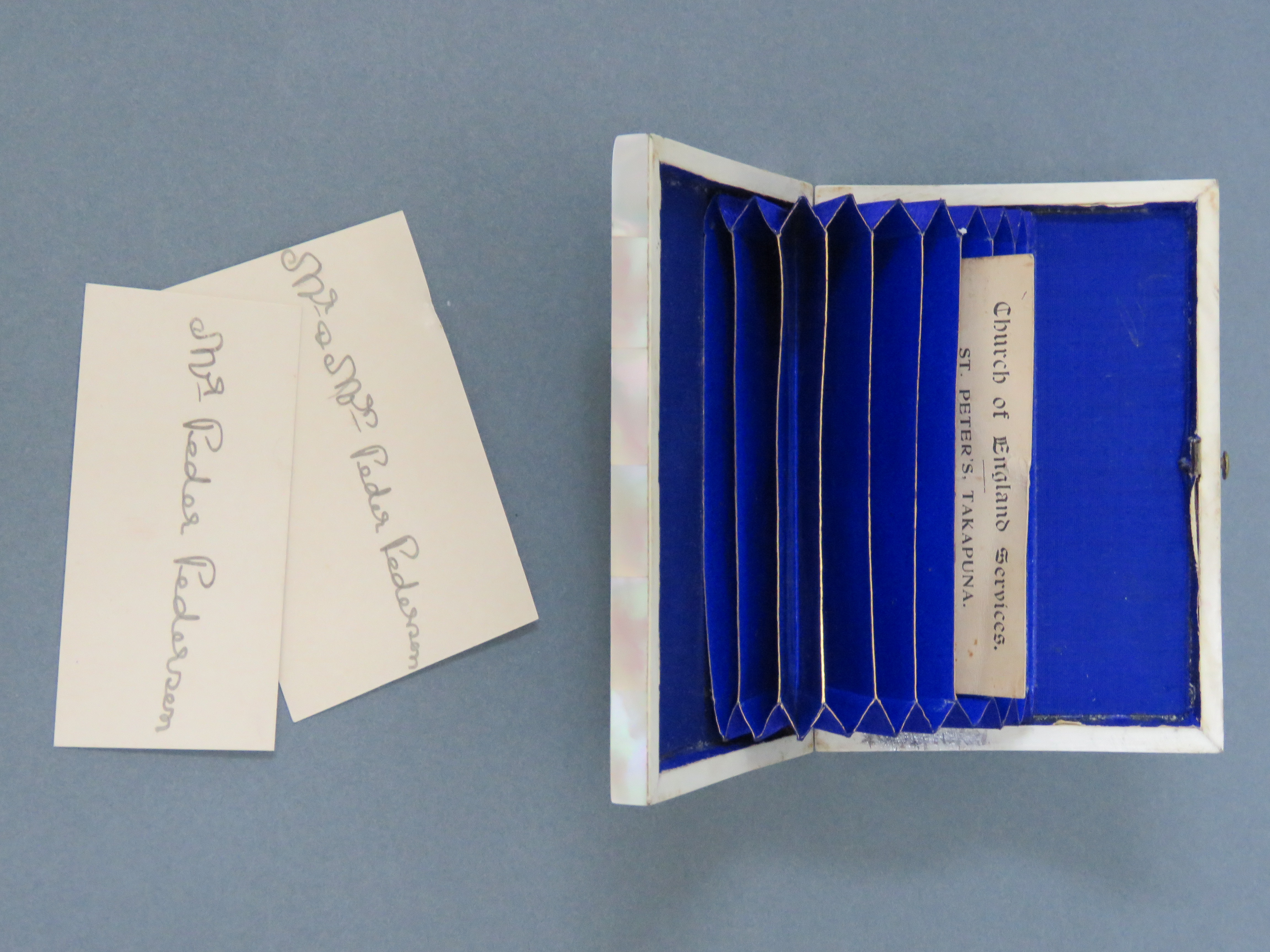
Imagine this: There is a knock at the door, a servant appears, a calling card is presented by the visitor. The servant responds, “Lady Hortense is not at home” and returns the card- the ultimate rebuff in Victorian times. Calling or visiting cards had a strict etiquette in their use that had developed since the 18 th century. Cards were used for social purposes; visitors making social calls left handwritten notes at the homes of friends who were not at home. By the 1760s the upper classes in France and Italy were leaving printed visiting cards decorated with images on one side and a blank space for handwriting on the other. The style quickly spread across Europe and to the United States. As printing technology improved, elaborate designs and the use of colour became increasingly popular. However, by the late 1800s there was a return to simpler styles.
.jpg?1593081542313)
In Victorian times both ladies and gentlemen needed personalized calling or visiting cards to maintain their social standing or to move up in society and of course there was need for a suitable receptacle to keep the cards in. There were many and varied designs and materials to be found. Silver was a very popular choice, but the cases could be made of tortoise shell, ivory, enamel and mother of pearl. The Whangarei Museum holds some lovely examples of mother of pearl card cases, pictured here. Two of the most popular styles were the flat case and the concertina case where two sides of the case opened to reveal folding silk pockets to hold a number of cards. The flat case, decorated on top with a shell ‘fleur des lys’ inlay, was donated with a concertina case hiding a striking cobalt blue interior as part of the Bedlington Family bequest. The second concertina case with a beautifully etched mother of pearl outer with a purple satin interior was donated by Mrs. Ewen and is dated to around 1892.
.jpg?1593081624385)
Today business cards have replaced visiting cards, although according to DeBretts handbook of 2016 gentleman’s cards are still in vogue, again with a strict set of rules governing what they can have written on them. The cases held by the museum would have originated in England in the 1800s. Gentlemen’s calling card cases were smaller than those of the ladies as their cases had to be kept in a pocket, as ladies could use a handbag or a reticule. Back to the cards themselves. These small cards were about the size of a modern day business card and usually featured the name of the owner and sometimes their address. Knowing and following the calling card “rules” signaled one’s status and intention. The essential convention was the first person would not expect to see the second person in the second’s own home (unless invited) without the first person having left their visiting card. This action would prompt a return card being left by the second person. This would signal they could meet, if however there was no response or the original was returned (Heaven forbid) in an envelope, the contact was not welcome. The whole procedure depended on the house having servants to open the door and receive the cards. If a card was left with a turned down corner indicated that the card had been left by a person and not by a servant. Sometimes the Master of the House instructed the servants to reject the visiting card of the caller, especially if the caller was deemed unsuitable socially. Poor chap trying to press his suit with the Lady Hortense!!
Alison Sofield
Whangarei Museum Volunteer
2 June 2020